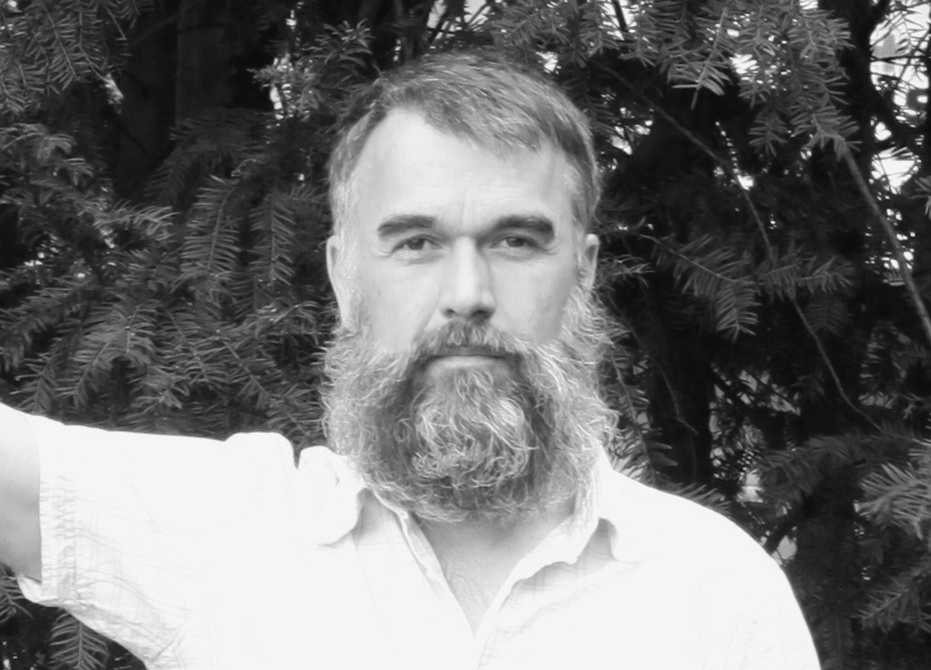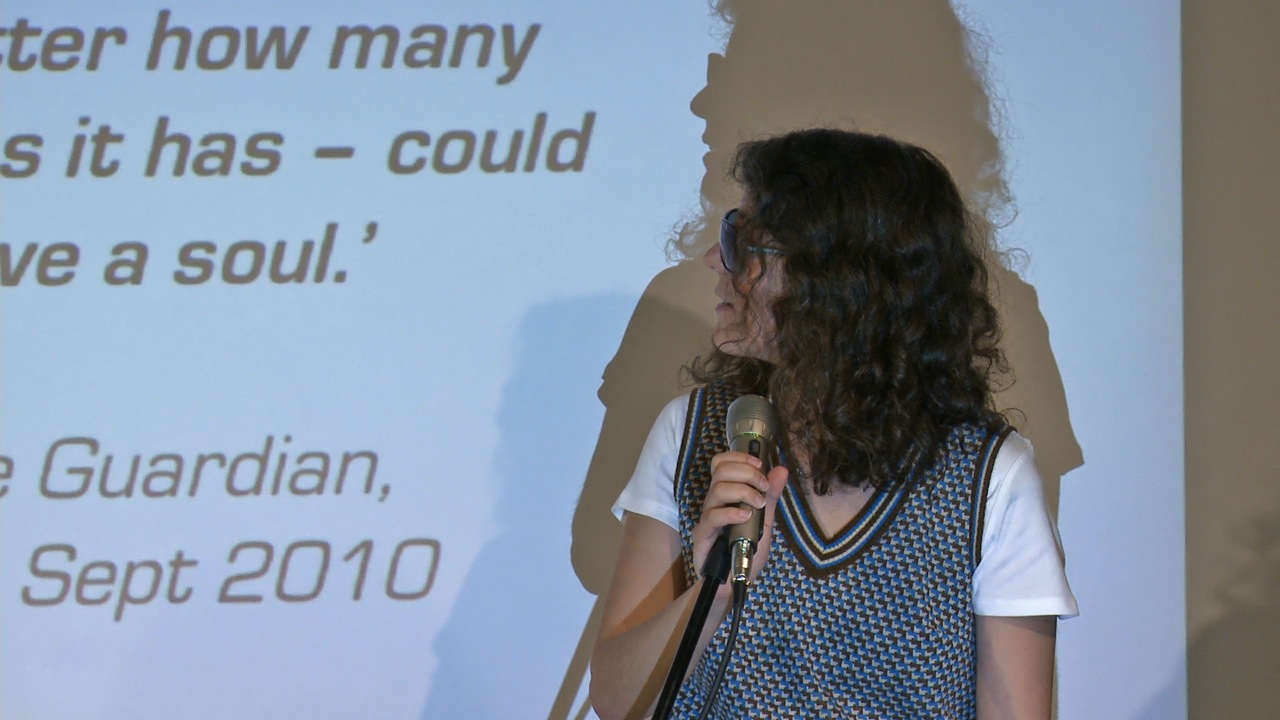TXT department studentsKeep Knotting Notes
Each student is managing one of the 10 chapters of Robert Bresson's Notes on Cinematography* (1950-1958): On Looks, On True and False, On Automatism, On Poverty, Sight and Hearing, Gestures and Words, The Real, On Fragmentation, Exercises. Learning these phrases by heart: eating them entirely. In return the phrases will be intersected with actual notes made during ARE YOU ALIVE OR NOT? lectures at the Rietveld Academie and at the Brakke Grond, forming a series of constantly updated performed text.
Models: Anneke Bosch, Justina Damauskaite, Laura Grimm, Marte van Haaster, Zhenela Kostova, Stijn Pommee, Iris Revallier, Sylvia Tap, Tiemen Visser, Milou Wansink; associate model: Martien van den Ouwelant; in cooperation with Cristiaan Klasema and Joke Robaard.
* Because you do not have to imitate like painters, sculptors, novelists, the appearance of persons and objects (machines do that for you), your creation or invention confines itself to the ties you knot between the various bits of reality caught. There is also the choice of the bits. Your flair decides.
Rana Hamadeh Can You Pull In An Actor With A Fishhook Or Tie Down His Tongue With A Rope?
The Shiite religious ceremony 'Ashoura' restages the battle of Karbala during which Imam Al Hussein (626–80 AD), the grandson of Prophet Mohammad and an allegorical reference to the figure of the oppressed, was killed. During the ten days of Ashoura, thousands of men, women and children take to the streets to re-enact / 're-witness' the historical battle. Looking at the configurations of power constituting the Syrian-Lebanese political weave, Rana Hamadeh’s sound play decodes the logics under which the Lebanese manifestations of Ashoura have transformed from their original role as a militant form of theatre towards their role today as a militarized form of theatre. The work asks whether it is at all possible to script Justice; to rehearse, orate, narrate, prop, weep, chant, choreograph, scenograph or even spectate justice? Departing from her sound play Can You Pull In An Actor With A Fishhook Or Tie Down His Tongue With A Rope? (2014-15), Hamadeh's first sketch for an opera-to-be will mark the beginning of a theatrical research aiming at schematizing new relations between the notions of justice, militarized capital and theatre.
Theodor Ringborg
As part of his presentation, writer and curator Theodor Ringborg will respond to and discuss Rana Hamadeh’s work. Ringborg’s main body of work regards a concept of secrecy, which is to say, an issue of the exposed and concealed, albeit not in binary opposition as in a task to differentiate the seen and unseen, visible and invisible, but rather as a problem that is situated neither here nor there. Drawing on Georg Simmel’s adage that “secrecy magnifies reality”, Ringborg relates to Derrida’s ‘abocular hypothesis’ and Deleuze and Guattari’s ‘becoming imperceptible’, and through themes such as teargas, masks and camouflage studies that which splinters the world between an apparent exterior and an oblique ulterior that in turn determines the exterior.
Jack Santino Carnivals of Grief: Popular Culture, Public Display, and the Democratic Impulse
What is the difference between the carnivalesque and the ritualesque? How is the traditional traditional similar to public political manifestations? Folkorist Jack Santino will address these questions today, which are also part of his long-term research into festivity, the carnivalesque, and folk and popular public display. While in Paris for a scholarly conference last month, Santino was moved by the emotions expressed in the public memorializations of death he found in the spontaneous shrines Parisians created in the aftermath of the Charlie Hebdo killings, and began to photograph them. For Santino, these as ‘performative commemoratives,’ both memorialize the untimely deaths of individuals and focus spectators’ attention on public issues. The Charlie Hebdo shrines themselves may be viewed as ‘Carnivals of Grief.’ Not only are they a riot of signs and symbols, more importantly, they are disruptive—found on street corners and at Metro stops, they call attention to themselves and disrupt the flow of everyday life. All these events and displays – les manifs, carnival, spontaneous shrines – are anonymous, communal, and of the people. This is what democracy looks like.
Claire Tancons
In contradistinction with Claire Bishop’s proposition that art be looked at through the lens of theater, Claire Tancons will suggest that cultural representations and artistic interventions need being scrutinized through the kaleidoscopic prism of Carnival. Following summary presentations of her landmark essays on displays of carnivalesque sensibilities in Occupy Wall Street’s demonstrations, Pussy Riot’s Punk Protest, and Tahir Square’s Giant Puppets, Tancons will offer a critical reflection on the relationship between theatre and carnival, terror and humor in civic debates and the public sphere.
Florian GöttkeBurning Images – performing effigies as political protests
In this lecture, Florian Göttke will introduce the peculiar, age-old, and widespread genre of effigy burning as protest which, in recent years, has been increasingly visible in international and cross-cultural conflicts. Göttke will show how as the practice of burning effigies of political leaders and popular figures activates mechanisms of inclusion and exclusion, it is characterized by an ambivalent and uncomfortable mix of laughter and violence and brings up associations ranging from carnival revelry to vigilante justice.
SLOT 1
13.00 - 15.302 bits
Part 0
Keep Knotting Notes performance by TXT department students
Everywhere in the Name of The Creative Industry / Stand-up Tragedy Nicolina Eklund, student at Rietveld Academie
Word of welcome by Gabriëlle Schleijpen, chief curator / head of Studium Generale Rietveld Academie
Part 1
Can You Pull In An Actor With A Fishhook Or Tie Down His Tongue With A Rope?
Sound Play by artist Rana Hamadeh
WARNING: The performance includes noisy elements and is therefore unsuitable for children or people with noise sensitivities.
Presentation by Theodor Ringborg, conversation between Rana Hamadeh and Theodor Ringborg
(30min break)
SLOT 2
16.00 - 17.30
2 bits
Part 2
Carnivals of Griefs and Shrines to Democracy
Claire Tancons introduces speakers and the topic discussion
Presentation by Jack Santino
Presentation by Florian Göttke
Round-up of presentations by Claire Tancons
(5min break)
SLOT 3 17.35 - 19.00 2 bits
Trialogue with Claire Tancons, Florian Göttke, Jack Santino + Q&A
Prelude by David Weber Krebs & Andrea Božić
Full Attendance 6 bits
** IMPORTANT: Speculations by Mette Ingvartsen in the RODE ZAAL has limited seats available – please make reservations at the front desk Thursday & Friday.
**MASTERCLASS SESSIONS for Rietveld Students
Esteemed guests of Are You Alive Or Not?, Claire Tancons (curator from New Orleans) and Dmitry Vilensky (member of the collective Chto Delat from Petersburg) will be leading two separate peripatetic sessions through the Rietveld Uncut exhibition, with a small group of students (maximum of 20). These conversational sessions will revolve around the students’ work as seen through the conceptual lens of the conference.
Each Masterclass addresses predominantly the Rietveld Uncut participants but it is also open to any student of the Rietveld Academie.
Reservations can be made at the front desk during Thursday, Friday and Saturday afternoon.
Friday, March 20 with Claire Tancons 10.30 - 12.30 2 bits
Saturday, March 21 with Dmitry Vilensky 17.15 - 18.30 2 bits




